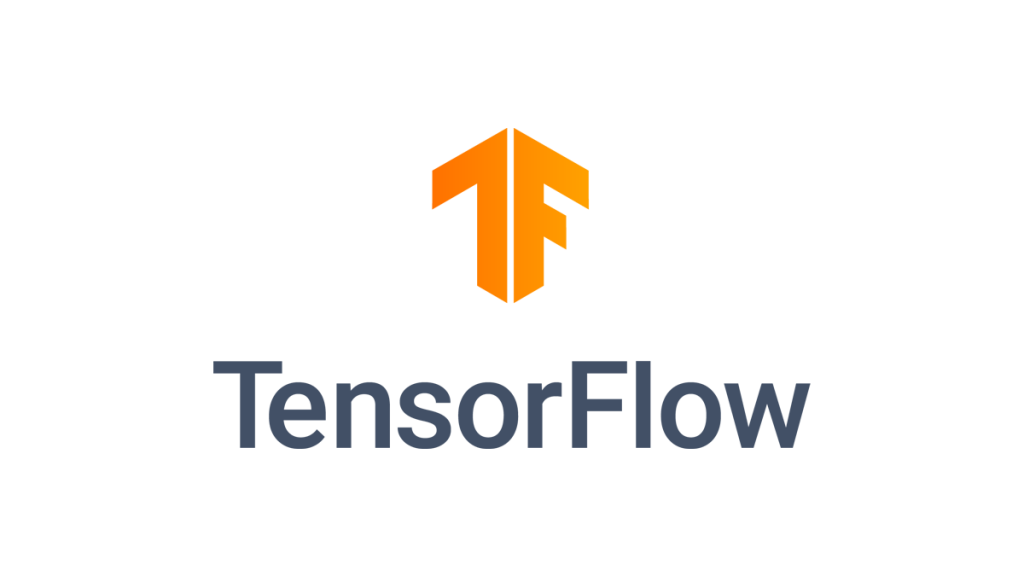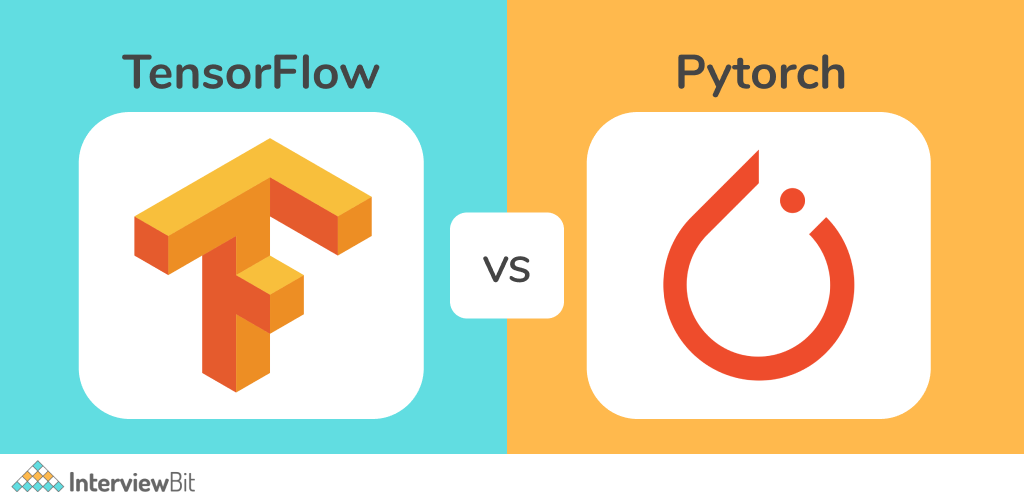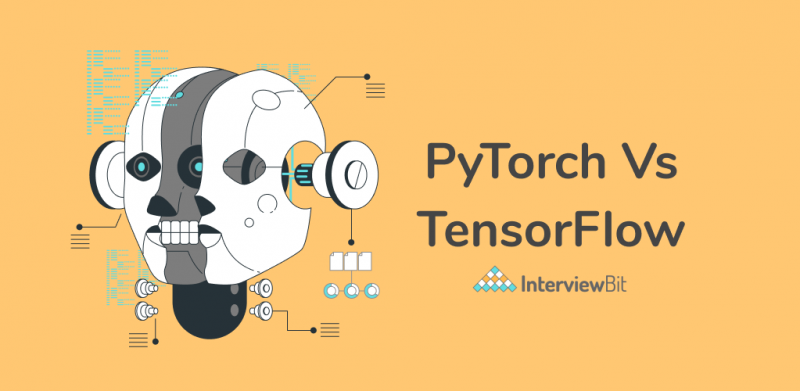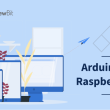PyTorch vs TensorFlow is a common topic among AI and ML professionals and students. The reason is, both are among the most popular libraries for machine learning. While PyTorch is the Pythonic successor of the now unsupported Torch library, TensorFlow is a curated machine learning project from the Google Brain Team.
AI, Machine Learning, and Deep Learning
For newcomers, it might be confusing to see the AI, ML, and deep learning (DL) terms tossed around frequently.
Deep learning is a subset of machine learning, which, in turn, is a subset of artificial intelligence. Deep learning is primarily concerned with neural nets (also known as neural networks or ANNs), which are digital replicas of the human brain.
Confused about your next job?
Machine learning specifically deals with developing machines that can think on their own and do certain tasks. For this, the ML model collects past data and makes future decisions based on the same.
Both ML and DL fall under the broad category of artificial intelligence. It is the field that is responsible for emulating human-like intelligence in machines. As PyTorch and TensorFlow are machine learning libraries, they can be used for training neural networks, which are the foundation of deep learning models.
In this article, we will put down all the differences among the two popular ML libraries, but before that let’s first get to know what each of them is and what are the features that make them so popular among the masses.
What is PyTorch?

Developed by Facebook’s AI Research lab (FAIR), PyTorch is an immensely popular machine learning library used for computer vision and NLP (natural language processing). It is a free and open-source library available under the Modified BSD license.
Its initial release came out in September of 2016. PyTorch is based on another popular – but now defunct – machine learning library, Torch. Technically, PyTorch is a Python-based scientific computing package that serves two main purposes:
- To be a replacement for the NumPy library, which is the default Python package for scientific computation.
- Offer an automatic differentiation library for implementing neural nets.
PyTorch aims to fast-track the process from research prototyping to production deployment. The ML library flaunts a mushrooming ecosystem that includes numerous libraries, tools, and frameworks to extend its capabilities and provides support for computer vision, natural language processing, training neural networks, and so on.
It offers seamless integration with the Python data science stack. Moreover, PyTorch is similar to NumPy, thus if you have already used it, then picking up PyTorch will be a breeze for you. Some of the big names that leverage the capabilities of PyTorch include Genentech, Microsoft, OpenAI, and Toyota Research Institute.
Features of PyTorch
PyTorch is a Python-based library that follows the imperative approach. This means that computations are written using the same run instantaneously and the developer needs not to write complete code before checking whether it’s working fine or not.
Therefore, PyTorch allows developers to run a specific portion of the code and inspect the same in real-time. Other important features of PyTorch are summed up as follows:
- A Giant Ecosystem – It is not just a library, but a comprehensive ecosystem replete with tools and frameworks, including:
- Captum – It is an open-source and extensible library for model interpretability.
- NeMo – This is a toolkit for conversational AI.
- Poutyne – It is a Keras-like framework for handling boilerplate code required for training neural nets.
- PySyft – PySyft is a Python library for encrypted and private deep learning.
- PyTorch Geometric Temporal – It is a dynamic extension library for PyTorch Geometric, which is a graph neural network library for developing and training GNNs (Graph Neural Networks).
- raster-vision – This is an open-source framework for deep learning on aerial and satellite imagery.
- TorchDrift – It is a data and concept drift library for ensuring that PyTorch models operate within the specifications.
- TorchIO – TorchIO is a set of tools for reading, augmenting, writing, and doing more on 3D medical images in deep learning applications created using PyTorch.
- Availability via Cloud – PyTorch provides support for major cloud platforms that facilitates the development and easy scaling of PyTorch models.
- Built-in Support for Python – PyTorch is written in Python. As such, it provides seamless integration with Python data science tools and technologies.
- Distributed Training – Optimizes performance with native support for asynchronous execution of collective operations and peer-to-peer communication.
- Dynamic Computational Graphs – Instead of using predefined graphs with fixed functionalities, PyTorch allows developers to build computational graphs on the go. Moreover, the ML framework allows developers to modify them during runtime in accordance with the requirements.
- Easy-to-Use API – PyTorch comes with a robust yet simple API.
- Efficient Model Deployment – PyTorch comes with TorchServe, which is an environment-agnostic tool that helps to deploy PyTorch models at scale. It offers features like multi-model serving and the creation of RESTful endpoints for application integration.
- Front-end in C++ – It offers a pure C++ interface that allows research in low-latency, performant, and bare-metal C++ applications.
- Huge and Proactive Community – PyTorch is backed by a giant and mushrooming community of developers and researchers that are adding more and more tools, libraries, and frameworks to make the machine library even better.
- ML for Mobile (Experimental) – The machine learning library supports an end-to-end workflow from Python to deployment on mobile platforms. It covers the usual integrating and preprocessing tasks required for adding machine learning to mobile apps.
- Production-Ready with TorchScript – With TorchScript, the popular ML library allows developers to create optimizable and serializable models from the PyTorch code. It offers a seamless transition from eager mode to graph mode in C++ runtime environments.
- Support for ONNX – PyTorch allows developers to export models in the ONNX format for direct access to ONNX-compatible platforms, runtimes, and so on.
What is TensorFlow?

TensorFlow is a well-known machine learning library backed by Google. Released in November 2015, the ML library is developed by Google Brain Team. TensorFlow prioritizes the training of deep neural networks, making it one of the leading ML libraries for deep learning.
Although initially released as a standalone machine learning library, it has evolved into a complete ecosystem over the course of its run. Today, TensorFlow is not just an efficient ML library, but a vast set of tools and frameworks to facilitate various niches of machine learning that include deep learning, image processing, video detection, and so on.
TensorFlow is an end-to-end platform that makes it easy for developers to build and deploy machine learning models. The name comes from the library’s reliance on tensors. Airbnb, The Coca-Cola Company, GE Healthcare, Google, Intel, and Twitter are some of the reputed clients of TensorFlow.
Features of TensorFlow
TensorFlow (TF) allows developers to do R&D without compromising performance and speed. Moreover, to facilitate debugging and prototyping, the popular ML library offers eager execution. Interestingly, TensorFlow uses NumPy at the back-end for manipulating tensors. Following are some of the best features of TensorFlow:
- Create Complex Topologies – TensorFlow lets you build complex topologies using Keras Functional API, Model Subclassing API, etc.
- Distribution Strategy API – TensorFlow offers distributed training on different hardware configurations without altering the model definition with the Distribution Strategy API that makes large machine learning training tasks manageable.
- High Extensibility – There are various tools and libraries available for extending the capabilities of TensorFlow. Some of the most popular ones are:
- BERT (Bidirectional Encoder Representations from Transformers) – It is a new language representation model and a transformer-based ML technique for NLP pre-training. It is a free-to-use, setup-free Jupyter Notebook environment that runs in the cloud.
- Colaboratory – Colab facilities executing TensorFlow code in the browser with a single click.
- ML Perf – It is a machine learning benchmark suite for gauging the performance of ML-based cloud platforms, hardware accelerators, and software frameworks.
- Ragged Tensors – These are the TensorFlow versions of nested variable-length lists that facilitate the storage and processing of data with non-uniform shapes.
- T2T (Tensor2Tensor) – It is a deep learning library that speeds up machine learning research and makes deep learning more accessible with its predefined DL models and datasets.
- TensorBoard – This is a set of tools that helps to debug, optimize, and understand TensorFlow programs.
- TensorFlow Playground – It lets developers experiment with a neural net in their web browser without worrying about breaking the same.
- TFP (TensorFlow Probability) – TFP is a Python library built on top of TF that facilitates combining deep learning with probabilistic models on GPUs and TPUs.
- More Flexibility with Eager Execution – Facilitates fast iteration and intuitive debugging.
- Platform- and Language-agnostic – The machine learning library provides support for almost all operating systems and programming languages.
- Read-to-deploy Anywhere – TensorFlow enables developers to train and deploy models anywhere, ranging from the web and mobile to edge devices and servers. The library offers:
- TensorFlow.js – This lets you train and deploy TensorFlow models in JS environments.
- TFX (TensorFlow Extended) – For full production pipeline.
- TensorFlow Lite – Enables running inference on edge and mobile devices.
- Straightforward Model Building – TensorFlow lets you build and train models using the high-level Keras API. This makes it easy for newcomers to get started with machine learning and TensorFlow. Moreover, the ML library offers to choose from several levels of abstraction.
- Superb Community Support – TensorFlow community is a vast, global group of developers, students, researchers, and professionals that are always ready to welcome new members and offer a helping hand to those in need.
PyTorch vs TensorFlow: Full Comparison

Both TensorFlow and PyTorch are examples of a robust machine learning library. Even though both serve the same purpose, the way they achieve it is different making them suitable for varying requirements.
The following table enumerates the differences between TensorFlow and PyTorch that will help you to decide which one to choose and when:
| Parameter | PyTorch | TensorFlow |
|---|---|---|
| Developer | It is developed by Facebook’s AI Research lab (FAIR) | The ML library is developed by Google Brain Team. |
| Primary Use | PyTorch majorly finds use in computer vision, reinforcement learning, and natural language processing. | Although TensorFlow helps to accomplish a galore of tasks, it specializes in training and inference of deep neural nets. |
| Based upon | It is the successor of the popular Torch library, which is an open-source ML library that uses LuaJIT. | TensorFlow is based on the concept of tensors that are algebraic objects that define relationships between sets of algebraic objects – scalars, vectors, and tensors – related to a vector space. |
| Approach to graph definition | PyTorch follows an imperative and dynamic approach to graph definition. Thus, developers can change, define, and execute nodes on the go. | TensorFlow follows a static approach for defining graphs. This means you have to define a graph before a model can run. |
| Popular tools build on top of | CatalystCheXNetHorizonTesla AutopilotUber’s PyroPyTorch Lightning | LudwigMagentaNucleusSonnetTensorFlow ProbabilityTensorFlow QuantumTRFL |
| Python-friendliness | The ML library provides built-in support for the Python programming language as it is tightly integrated with Python and behaves native almost all the time. | TensorFlow doesn’t provide special support for Python. |
| Debugging | It allows debugging at runtime using Python debugging tools like pdb and PyCharm debugger. | Runtime debugging is only available with tfdgb in TensorFlow. |
| Visualization support | PyTorch supports visualization via visdom. It has limited features and integration support is unavailable. | TensorFlow offers an excellent tool for visualizing ML models called TensorBoard. It is a feature-rich tool and offers integration support. |
| Deployment | To deploy models developed using PyTorch, developers need to code a REST API via Flask, Django, or some other Python framework. Hence, deployment is not readily available. | Deployment is readily available with TensorFlow Serving that deploys ML models on a gRPC server. |
| Declarative Data Parallelism | PyTorch offers declarative data parallelism with less control and less effort. | TensorFlow offers more control but also requires more manual effort to achieve declarative data parallelism. |
| Feels like | PyTorch behaves more like a framework by providing specific abstractions, and it follows an object-oriented approach. | Although plain TensorFlow seems like a library with many low-level functions and the need to write lots of boilerplate code, it offers high-level wrappers – via frameworks such as Keras, Sonnet, and TFLearn – to avoid doing so. |
| Built-in support for C++ | The machine learning library has a ready-to-use C++ API that allows developers to quickly get on board with C++ and PyTorch. | Although you can use TensorFlow with C++, no inbuilt support for the same is available. |
PyTorch or TensorFlow
Although both PyTorch and TensorFlow are used for many similar causes in machine learning, each of them is well-suited for different requirements. For example, PyTorch is more suitable for computation-heavy tasks while TensorFlow focuses more on training neural networks.
PyTorch is ideal for research work, making dynamic changes to the ML model, working in a Python-based environment, and having a better development and runtime debugging experience.
TensorFlow, on the contrary, works best when you need a mature and powerful deep learning library to develop production-ready ML models, deploy ML models on the mobile, and perform large-scale distributed model training.
Conclusion
Both TensorFlow and PyTorch are feature-rich and highly productive machine learning libraries that are capable of achieving great success with ML model building. Each of them supports a big and growing ecosystem of tools and libraries, and have their own offerings that can make developing and training performant neural networks easy and better.
FAQs
Q: Is PyTorch based on NumPy?
A: No, PyTorch is not based on NumPy. Instead, both are similar machine learning libraries, but PyTorch offers better GPU acceleration. PyTorch tensors are similar to NumPy arrays though.
Q: Is TensorFlow a Python library?
A: Yes, TensorFlow is a Python library for machine learning developed and maintained by Google. It provides static execution of dataflow graphs and supports various classification and regression algorithms.
Q: Is PyTorch better than TensorFlow?
A: PyTorch is better than TensorFlow for doing fast research and when you need to develop models that require dynamic changes. It is also preferred when you need to work in a Python-based environment and require runtime debugging.
Q: Does Google use PyTorch?
A: Yes, Google uses PyTorch for its cloud platform i.e. Google Cloud. It is available as PyTorch / XLA support for Cloud TPUs.




